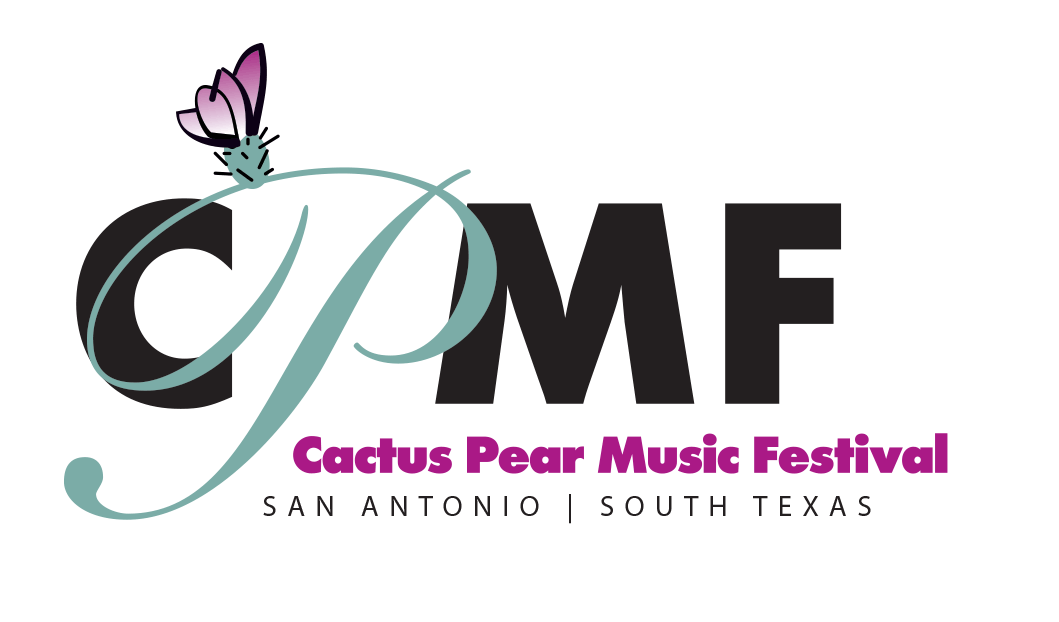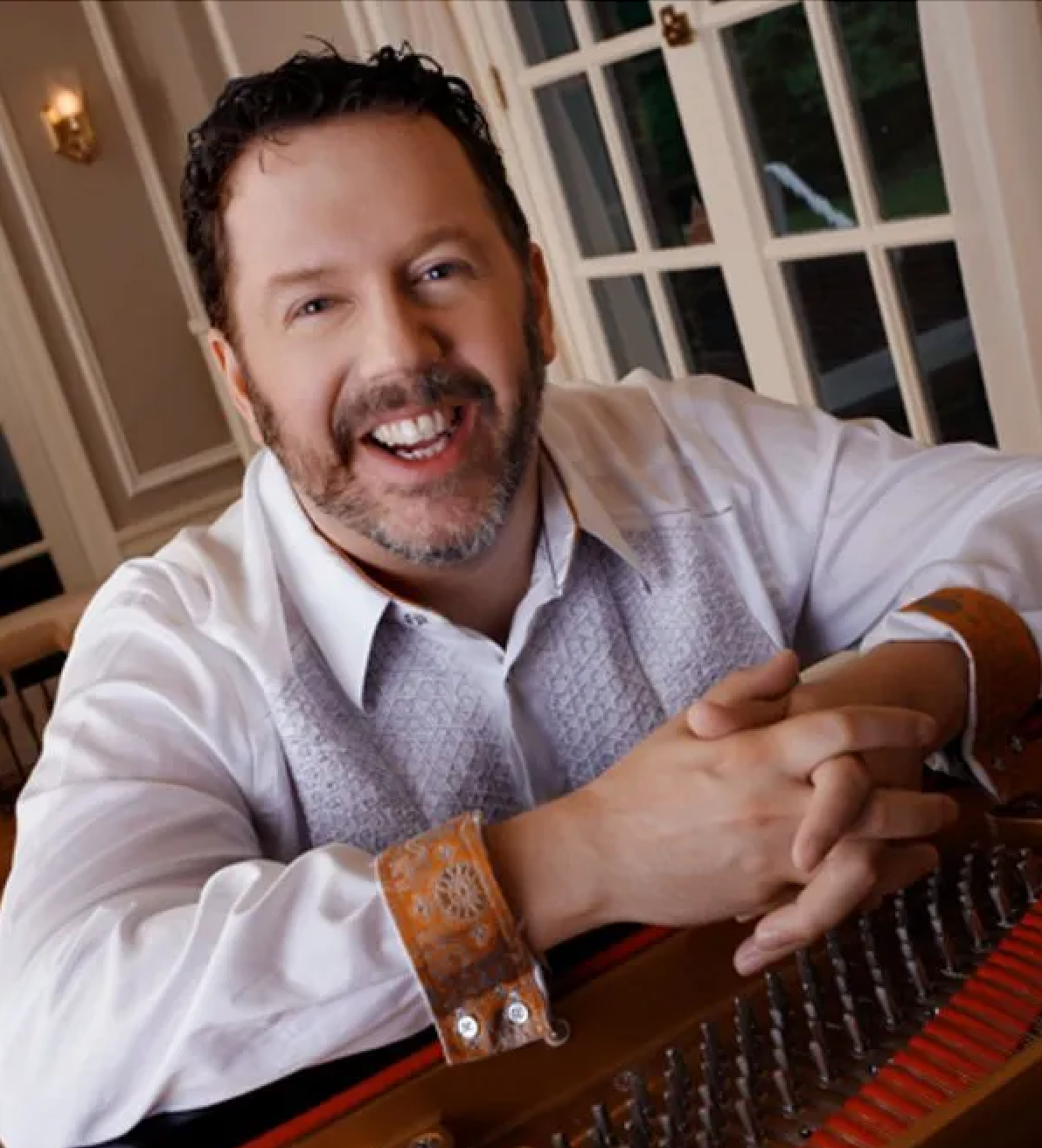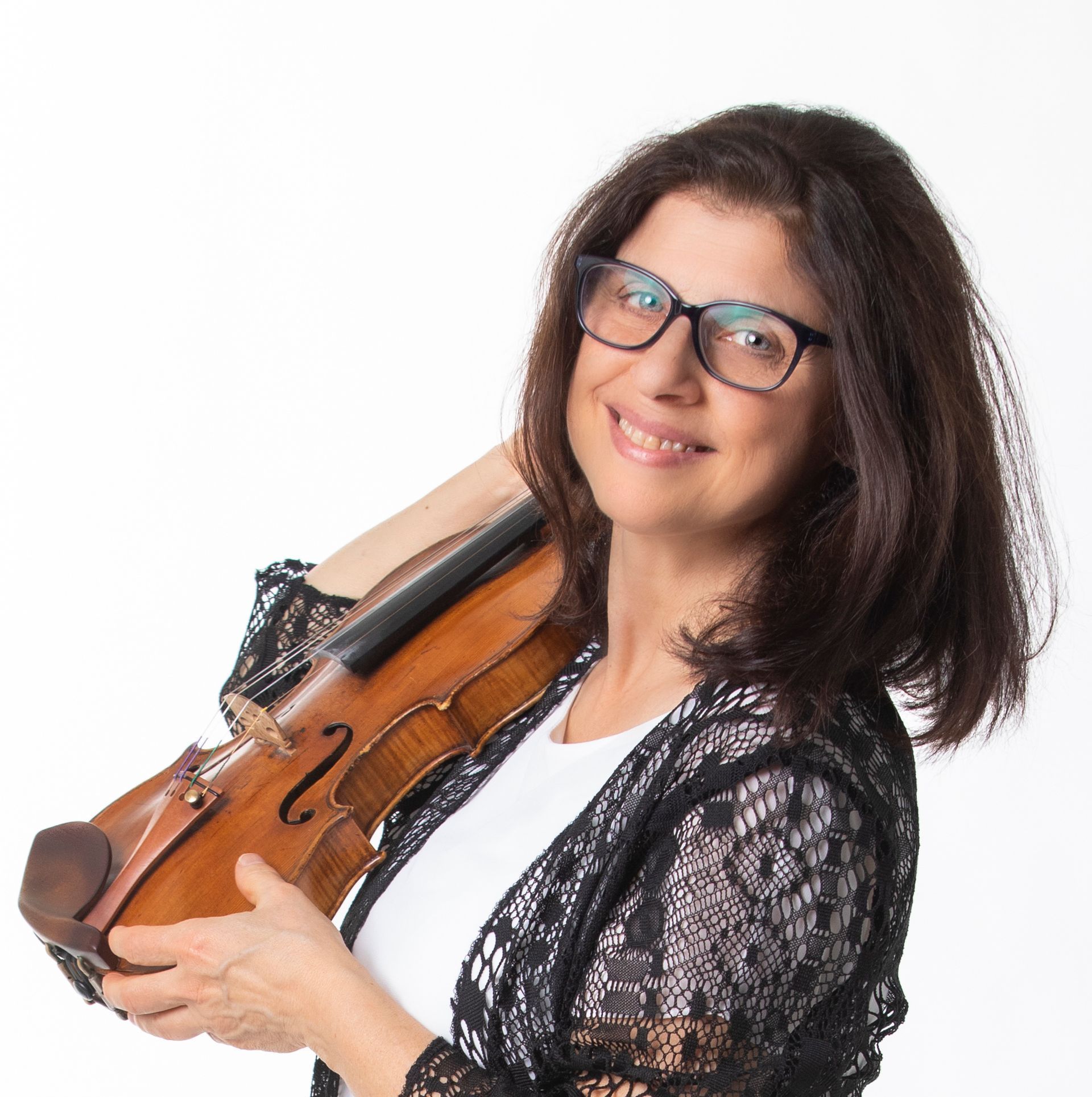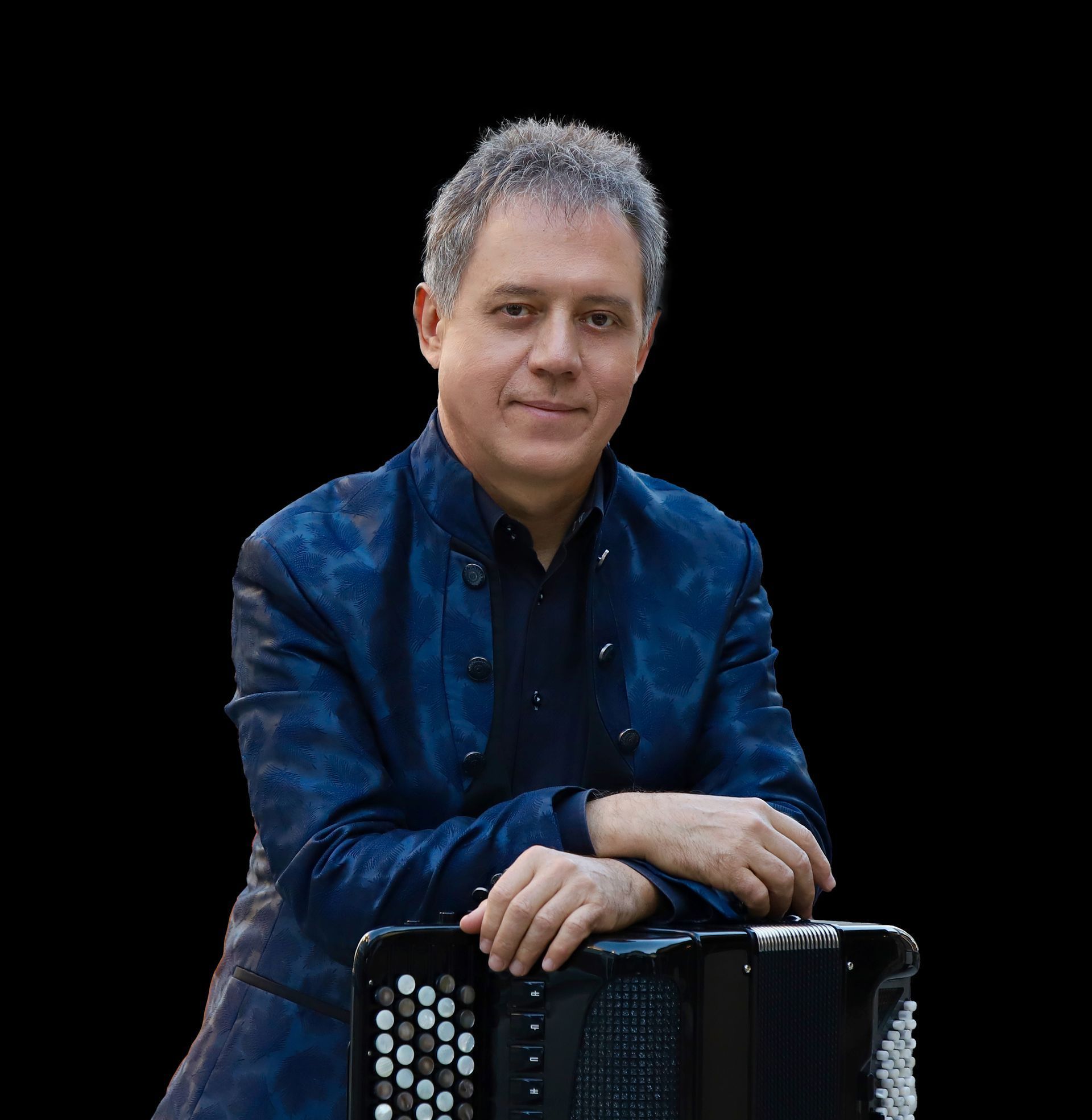WEEK 2 PROGRAM NOTES
Program Notes
SATURDAY | JULY 19, 3 PM
UIW | DIANE BENNACK HALL
Program notes ©2025 by Jeffrey Sykes, artistic director of Cactus Pear Music Festival
Count Me In is chamber music with a serious groove. Beethoven kicks things off with his delightfully cheeky Kakadu Variations—a slow burn that builds into a full-blown romp. From there, it’s all in: Piazzolla’s tango fire, Gabriela Lena Frank’s folkloric brilliance, and original works by Stas Venglevski that blur the lines between dance, drama, and pure joy. With the accordion in the spotlight, plus a devilish dash of John Williams and a final swirl of La Cumparsita, this concert is a rhythmic, joy-fueled celebration of musical togetherness. With so much rhythmic spark and ensemble fire, this program doesn’t wait for you to say “count me in”—it pulls you in from the very first note.
Ludwig van Beethoven
(1770–1827)
Variations in G Major
on “Ich bin der Schneider KakAdu,” Op. 121a,
for piano, violin, and cello
Composed ca. 1803–24 | Vienna, Austria
In a career filled with monumental string quartets, symphonies, and piano sonatas, Beethoven’s Kakadu Variations might seem like an outlier—a lighthearted set of variations on a catchy tune from a forgotten comic opera. But there’s more going on here than meets the ear.
The theme—“Ich bin der Schneider Kakadu”—comes from Wenzel Müller’s wildly popular 1794 opera Die Schwestern von Prag (The Sisters from Prague). The word Kakadu means cockatoo in German, but in this context likely refers not to a parrot, but to a flamboyant pompadour hairstyle fashionable in Vienna at the time. The character Kakadu is a tailor and comic braggart, who tells of his misadventures: traveling the world, getting hauled before the French Convention, mistakenly conscripted into the military, and finally escaping home to Germany. The tone is satirical, irreverent, and delightfully absurd.
Beethoven's decision to use this tune in a variation set—especially one introduced by a brooding, minor-key
Adagio assai—was almost certainly tongue-in-cheek. The contrast between the tragic weight of the introduction and the perky theme that follows would have been both surprising and hilarious to contemporary listeners. But this isn’t just musical slapstick. The variations that follow range widely in character and craft: from graceful elegance to brilliant virtuosity, from lyrical charm to contrapuntal sophistication.
Though published in 1824—during the same period Beethoven was finishing the Diabelli Variations, the Missa Solemnis, and the Ninth Symphony—the Kakadu Variations likely originated much earlier, perhaps as early as 1803. Beethoven returned to the piece in 1816, revising it substantially, and likely made final touches before publication. Scholar Lewis Lockwood has traced the work’s layered evolution and sees it as a “nostalgic” act by an older Beethoven looking back on a youthful sketch and dressing it in the denser textures and expressive power of his mature style.
This is especially evident in the remarkable double fugue that bridges the final variation to the Allegretto coda—a compact burst of counterpoint that recalls the architectural fugues of Beethoven’s Diabelli Variations and even the Ninth Symphony. Its presence adds weight and surprise to a work otherwise full of charm, wit, and theatrical flair.
The
Kakadu Variations may be playful on the surface, but they show Beethoven working at multiple levels: parodying convention, experimenting with form, and relishing the act of transformation. And transformation is, after all, the essence of variation. On a program called
Count Me In, where rhythm, variation, and ensemble interplay are key themes, Beethoven’s witty, richly layered work makes a fitting and fascinating entry point.
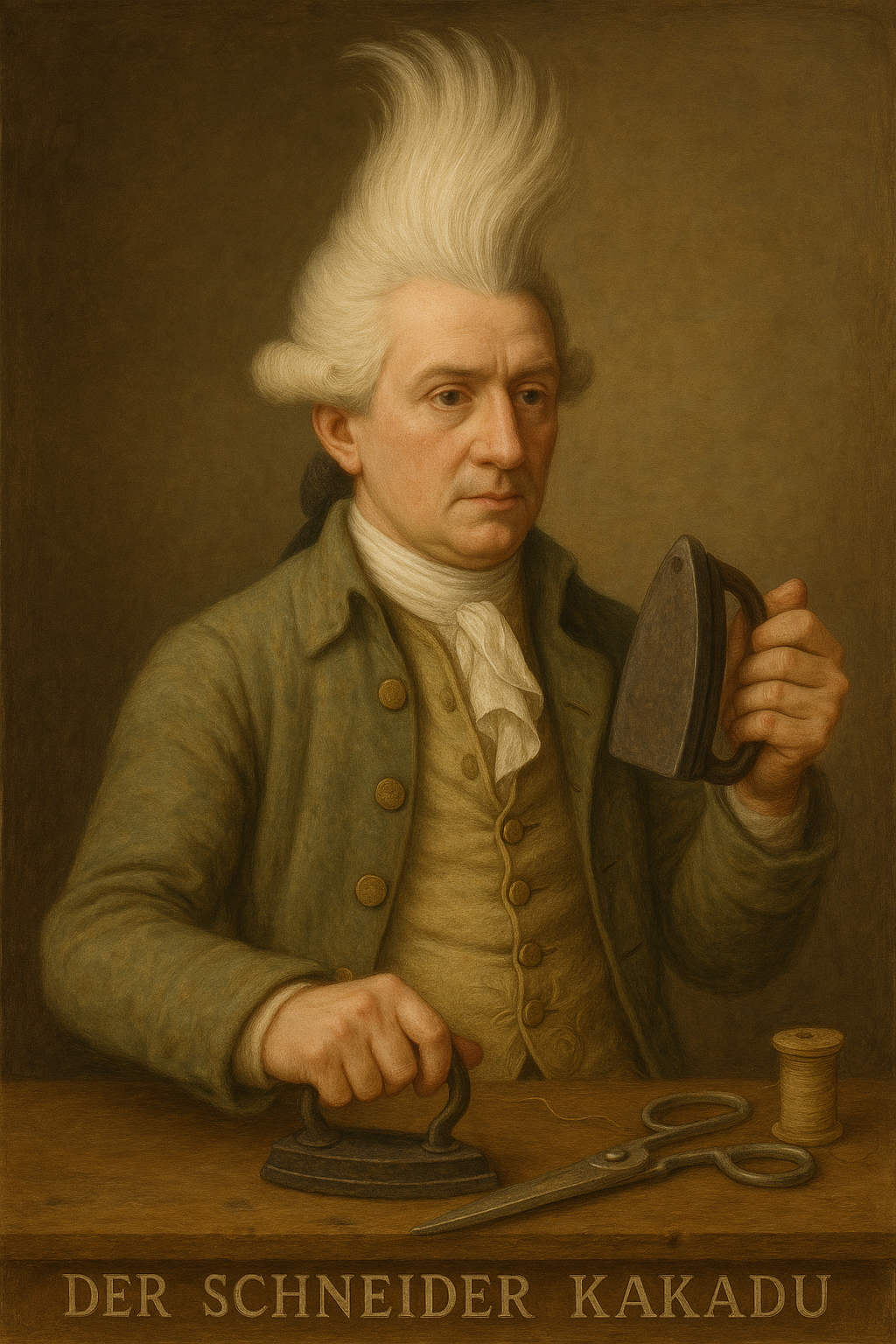
Stas Venglevski
(b. 1964)
NOT A CLUE
for flute and bayan
STASERA
for flute and bayan
Works described from the stage by the composer.
Gabriela Lena Frank
(b. 1972)
FOUR FOLK SONGS
for piano, violin, and cello
Composed 2012 | United States
Gabriela Lena Frank’s music lives at the intersection of cultures. Born in Berkeley, California, to a mother of Peruvian-Chinese heritage and a father of Lithuanian-Jewish descent, Frank has long explored questions of identity through sound—drawing on her diverse ancestry to create music that is vibrant, layered, and deeply personal. Trained as a pianist and composer in the Western classical tradition, she has carved out a space that is uniquely her own: one that fuses folk traditions, storytelling, and classical forms with stunning clarity and imagination.
Her Four Folk Songs for piano trio (2012) is a prime example of this synthesis. Written for the relatively traditional instrumentation of piano, violin, and cello, the piece infuses the concert hall with the colors, rhythms, and gestures of Peruvian music. But these are not arrangements or transcriptions—they are reimaginings, composed from the inside out. Each movement draws on a different facet of Peruvian culture, translated into a musical language that’s unmistakably Frank’s.
Canto para La María Angola opens the set with solemn resonance. Inspired by the legendary María Angola church bell in Cusco, the music evokes tolling sonorities and a sense of ritual gravity—both reverent and mythic.
Children's Dance captures the joy and unpredictability of children at play. With darting rhythms and quick, playful exchanges, this movement dances in miniature, full of curiosity and delight.
Serenata is a love song in the style of the traditional serenades performed by guitarists in Peruvian eateries. Gentle, swaying rhythms and lyrical lines create a mood of nighttime warmth and quiet devotion.
The final movement, Chavín de Huantar, plunges us into the world of one of Peru’s earliest and most enigmatic civilizations. Dating back as far as 1800 BCE, the Chavín culture flourished high in the Andes, known both for its stunning artistic achievements—monumental stonework, intricate ceramics, and expressive sculpture—and for ritual practices that included human sacrifice. Frank evokes this distant, pre-Inca world through a sonic landscape of ferocity and mystery: the cello issues warlike cries, the violin keens in anguish, and the trio is swept into a violent, driving middle section that suggests both ceremonial fervor and primal chaos.
Frank’s music invites performers and audiences alike into a kind of musical conversation, one that is at once intimate and expansive, rooted in cultural memory and alive in the present moment.
Stas Venglevski
(b. 1964)
TWO-step
hey polka
love and pigeons
octobLer rondo
spring dance
for FLUTE and bayan
Works described from the stage by the composer.
John Williams (b. 1932)
Devil's dance from
the witches of eastwick
for violin and bayan
Composed 1987 | Hollywood, California
John Williams may be best known for the sweeping grandeur of Star Wars and Harry Potter, but in Devil’s Dance from The Witches of Eastwick (1987), he lets loose with wicked flair. This electrifying showpiece comes from the film’s climactic ballroom scene, where supernatural mischief takes center stage. Originally written for violin and orchestra, it’s a dazzling blend of classical virtuosity and cinematic sorcery—equal parts Paganini and pyrotechnics.
In this arrangement for violin and bayan, the music crackles with even more edge and agility. The violin cackles, teases, and seduces, dashing through fiendish runs and sudden leaps. The bayan—an orchestra in a box—adds slithering harmonies, rhythmic bite, and bursts of infernal laughter. Together, the duo conjures an atmosphere both gleeful and unhinged, as if dancing on a wire over some delicious abyss.
Gerardo Matos Rodríguez (1897–1948)
LA CUMPARSITA
for violin, cello, piano, and bayan
Composed 1916 | Montevideo, Uruguay
No tango is more iconic—or more instantly recognizable—than La Cumparsita. Composed in 1916 by a teenage Gerardo Matos Rodríguez, a Uruguayan architecture student with a gift for melody, the piece began life as a march before being transformed into a tango with lyrics by Pascual Contursi and Enrique Maroni. Over time, it became the unofficial national anthem of tango, closing milongas across the globe and evoking a heady mix of nostalgia, longing, and romance.
This arrangement for violin, cello, piano, and bayan reveals the piece’s operatic sweep and emotional depth. The bayan lends a breathy elegance and expressive shading, while the strings sing and sigh, alternating between lush phrasing and pointed rhythmic snaps. The piano anchors the ensemble with classic tango pulses and surging harmonies. Far from a museum piece, this
Cumparsita lives and breathes—it’s both dance and drama, heartbreak and heat.
Astor Piazzolla
(1921-1992)
Verano Porteño
from The Four Seasons of Buenos Aires
for violin, cello, flute, bayan, and piano
Composed 1965 | Buenos Aires, Argentina
Astor Piazzolla’s Verano Porteño—or Summer in Buenos Aires—simmers with sultry heat and the restless energy of a city that never stops moving. Composed in 1965 as a standalone piece (well before it became part of his Four Seasons of Buenos Aires), Verano captures both the sweltering weather and the simmering tension of a Buenos Aires summer: languid afternoons, restless nights, and the charged pulse of urban life. Like much of Piazzolla’s music, it blends Argentine tango with classical structure and jazz-inflected freedom.
This version, arranged for violin, cello, flute, bayan, and piano, teems with colorful interplay and rhythmic bite. At times the flute soars like hot wind off the pavement, while the violin and cello take turns smoldering or slicing through the texture. The bayan adds both breath and bite—whispering, snarling, or anchoring the ensemble’s swagger—while the piano steers with percussive authority. Melancholy lyricism rubs up against streetwise edge, and sudden shifts in tempo or texture keep the music alert and alive.
Verano Porteño doesn’t ask you to sit back and watch the season unfold—it pulls you into its heat and motion.
Program Notes
SUNDAY | JULY 20, 3 PM
UIW | DIANE BENNACK HALL
Program notes ©2025 by Jeffrey Sykes, artistic director of Cactus Pear Music Festival
As we approach the final concert of this season’s festival, The Final Countdown draws together a tapestry of musical voices—nostalgic, fiery, sacred, and celebratory. This program moves across eras and continents, opening with refined elegance and closing with the passionate pulse of popular tradition. Strings and winds, piano and bayan intertwine in a genre-crossing journey that bids farewell not with solemnity, but with soul.
Bohuslav Martinů
(1890–1959)
TRIO
for Flute, cello, and piano, h. 300
Composed 1944 | New York City, United States
Composed in 1944 in New York City, Bohuslav Martinů’s Trio for flute, cello, and piano is a compact gem—bright, rhythmically vital, and full of life. Written during his wartime exile in the United States, the piece reflects Martinů’s signature blend of neoclassical form, Czech folk character, and modern harmonic language. Though far from home, Martinů retained the buoyancy and inventive spirit that marks so much of his best chamber music.
The instrumentation itself—flute, cello, and piano—is somewhat unusual, but Martinů handles it with brilliant balance and conversational grace. Each instrument has a distinct voice, and their interplay often feels like an intimate and witty dialogue. The music is lean and elegant, never showy, and filled with the kind of spontaneous energy that gives chamber music its unique charm.
The first movement, Allegretto, opens with syncopated rhythms and playful exchanges between the instruments. Czech folk music is never directly quoted, but its dance rhythms and light-footed spirit clearly inform the style. The textures are transparent, and the mood is immediately engaging—music that smiles without needing to raise its voice.
The second movement, Adagio, offers a lyrical contrast. Here, the cello and flute share a singing, introspective melody while the piano lays down gentle harmonic support. The tone is wistful and still—an inward breath between the more extroverted outer movements.
The finale begins in dreamy ambiguity before launching into a whirling, folk-tinged rondo. Rhythmic surprises and sly harmonic shifts keep players and listeners on their toes. The music gathers momentum toward a ending full of sparkle and dash—a joyful sprint forward.
Though composed in exile and wartime uncertainty, Martinů’s trio feels anything but heavy. It affirms, rather than reflects, and speaks in tones of resilience, wit, and vitality.
Gabriel Fauré
(1845–1924)
PIANO TRIO in d minor, op. 120
for piano
Composed 1922-23 | Paris, France
In 19th-century France, musical life revolved around three great institutions: the Paris Conservatoire, the Opéra, and the Opéra-Comique. These were all part of a single ecosystem—singers singing opera, instrumentalists playing in opera orchestras, composers writing opera, and the results performed on subsidized stages. Instrumental concert music, especially chamber music, had little place in this system. What few concerts were mounted often featured operatic paraphrases or other light fare, and serious instrumental music was viewed as peripheral to the musical milieu.
Composers who wished to work outside opera—particularly in the realm of chamber music—had two options: cultivate connections through the salons of Parisian high society, or join grassroots initiatives like the Société Nationale de Musique, founded in 1871 under the banner Ars Gallica to promote French instrumental art. Gabriel Fauré, educated not at the Conservatoire but at the École Niedermeyer (a school for church musicians), would travel both paths. He became a regular at the salons of Camille Saint-Saëns and Pauline Viardot, where he met many of France’s leading musical figures. With Saint-Saëns and others, he co-founded the Société Nationale, which would premiere many of his early works and provide a platform for the revival of French instrumental music.
Fauré eventually came full circle: in 1905, after a series of musical-political upheavals, he was appointed director of the very Conservatoire that had once excluded him. As director, he initiated sweeping reforms and championed modernist voices—earning the nickname “Robespierre” for his thorough house-cleaning. But the toll on his health was great. Beset by worsening hearing loss, emphysema, and declining vision, Fauré retired in 1920. That retirement was, ironically, the most fruitful compositional period of his life. In just four years, he produced a final cluster of masterpieces: the Second Piano Quintet (Op. 115), the String Quartet (Op. 121), and the Piano Trio in D minor, Op. 120, composed in 1922–23.
Fauré worked on the Andantino in the summer of 1922 in Annecy-le-Vieux, completing the outer movements the following winter in Paris. The trio was premiered in May 1923 by a group of young Conservatoire prizewinners and received a second, star-studded performance the next month by Thibaud, Casals, and Cortot. Fauré dedicated the score to Madame Maurice Rouvier, though a glowing letter from Queen Elisabeth of Belgium, who believed the piece had been dedicated to her, captures its impact: “This work is so great and full of the charm of poetry… I was enveloped by that inexpressible exaltation which emanates from your compositions.”
Despite calling it “a little trio,” Fauré imbued the work with grace, contrapuntal detail, and harmonic subtlety—hallmarks of his late style. The first movement, Allegro ma non troppo, opens with a long-spun melody marked cantando—“singing.” The line unfolds with quiet assurance, drifting through distant harmonic realms while maintaining its internal logic and clarity. There’s a sense of inevitability in how the music moves forward—its momentum is not urgent, but irresistible. Beneath the surface calm lies a current of energy that never lets go.
The second movement, Andantino, is deeply inward and tender, with the melody entrusted to the strings, while the piano lays down a foundation of simple, pulsing chords. The result is music of hushed intimacy, almost meditative in its restraint. This is one of Fauré’s most quietly poignant movements—expressive without ever becoming indulgent. The atmosphere is one of suspended time, a kind of luminous stillness.
The finale, Allegro vivo, erupts with rhythmic vitality. Originally conceived as a scherzo, the movement retains the lightning-fast reflexes and taut energy of that form—everything is charged with urgency. Moments of quiet function not as repose, but as springs coiled for release. The interplay between instruments is agile and precise, yet the emotional arc is expansive: exhilaration, tension, release. It’s a remarkable fusion of formal grace and visceral drive.
Fauré lived well into the age of Schoenberg, Stravinsky, and Bartók, but he remained a classicist in spirit. “All those who seem to create new ideas,” he once wrote, “are only expressing, through their own individuality, what others have already thought and said.” That spirit of continuity and refinement is on full display in this trio—written not in defiance of the modern world, but as one of his parting gifts to it. It is music of introspection and light—an expression not of farewell, exactly, but of final clarity.
Johann Sebastian Bach (1685–1750),
arr. Andrei Golsky
gypsy invention
based on BACH'S two-part invention IN D MINOR
Composed 2006 | United States
Arranger Andrei Golsky reimagines one of Bach’s pedagogical masterpieces through the lens of Eastern European folk dance. This virtuosic adaptation of Bach’s Two-Part Invention in D minor injects syncopation, ornament, and rhythmic asymmetry into the composer’s clean counterpoint. The result is something that feels both reverent and mischievous—a spirited blend of structure and freedom that captures the thrill of transformation. Bach, filtered through folk rhythm, invites us to rethink what it means to “count”—not merely to keep time, but to infuse it with joy.
Efrem Podgaits
(b. 1949)
Ave maria, op. 195
for cello and bayan
Composed 2005 | Russia
Efrem Podgaits, born in 1949 in Vinnytsia, Ukraine, is one of the most prolific and stylistically versatile composers in contemporary Ukrainian music. A graduate of the Moscow Conservatory and a professor at the Ippolitov-Ivanov State Musical College, Podgaits has written across virtually every genre—operas, symphonies, choral works, concertos, and an expansive catalog of chamber music. His works are marked by expressive lyricism, rhythmic complexity, and a gift for illuminating unexpected instrumental pairings.
Composed in 2005 and designated as his Opus 195,
Ave Maria was written for two of Russia’s most celebrated performers: bayan virtuoso Friedrich Lips and cellist Vladimir Tonkha. It’s a work of restrained intensity and spiritual reflection, using the deep, singing voice of the cello and the rich tonal spectrum of the bayan to evoke a timeless sense of devotion. The piece unfolds in slow waves, at once contemplative and emotionally charged. Podgaits doesn't set a sacred text here, but the music carries the weight of a prayer—personal, searching, and resonant with silence.
Angél Villoldo
(1861–1919)
el choclo
for flute, cello, piano, and bayan
Composed 1903-05 | Buenos Aires, Argentina
Angél Villoldo is widely credited as one of the founding fathers of Argentine tango. Born in Buenos Aires, he was a singer, guitarist, and composer who brought the tango from its roots in urban dance halls and street corners into mainstream popularity at the turn of the 20th century. His most famous work, El Choclo (“The Corn Cob”), is one of the earliest tangos to gain international recognition.
First performed in Buenos Aires around 1905, El Choclo has been arranged for countless ensembles and performed in settings ranging from smoky cafés to grand concert halls. Villoldo’s original melody is instantly catchy—bold, syncopated, and tinged with both swagger and sentimentality. Its enduring popularity speaks not only to the strength of the tune but to the tango’s remarkable adaptability.
In this version for flute, cello, piano, and bayan,
El Choclo takes on new textures and colors. The bayan brings earthy pulse and rhythmic clarity, the flute dances above with sparkling embellishments, and the cello and piano anchor the harmonic and percussive drive.
Astor Piazzolla
(1921-1992)
Ave maria, op. 195
for flute, cello, and bayan
Composed 1984 | Buenos Aires, Argentina
While best known for the rhythmic fire and daring spirit of nuevo tango, Astor Piazzolla also had a deeply lyrical side—nowhere more evident than in his Ave Maria. Originally composed in 1984 as incidental music for a film (Enrico IV, based on Pirandello’s play), the piece was later published under the title Tanti anni prima (“So Many Years Ago”) and eventually became known as Piazzolla’s Ave Maria.
Unlike the more famous Ave Maria settings of Schubert or Gounod, Piazzolla’s version contains no sacred text. Yet its quiet intensity and sustained melodic lines evoke an unmistakably prayerful atmosphere. The music unfolds slowly and tenderly, a meditation on memory and longing, shaped by Piazzolla’s unique blend of tango melancholy and classical restraint.
In this arrangement for flute, cello, and bayan, the piece glows with warmth and intimacy. The bayan lends breath and depth, the cello provides a resonant core, and the flute traces the melodic arc with quiet radiance.
Carlos Gardel
(1890–1935)
Por una cabeza
for Violin, cello, piano, and bayan
Composed 1935 | Buenos Aires, Argentina
Few songs in the tango repertoire are as beloved—or as cinematic—as Por una cabeza. Composed in 1935 by tango icon Carlos Gardel with lyrics by Alfredo Le Pera, the song’s title is a horseracing phrase that means “by a head.” The lyrics speak of a compulsive gambler who compares his addiction to horseraces with his attraction to women. Gardel’s lilting melody and Le Pera’s poignant lyrics made the piece an instant classic, and its legacy has only grown thanks to countless recordings and memorable film appearances, from Scent of a Woman to Schindler’s List.
Gardel, born in France and raised in Argentina, was the golden voice of tango’s golden age—a singer, composer, and actor whose music helped elevate tango from dance hall entertainment to national art form.
Por una cabeza is one of his most elegant creations: wistful, seductive, and heartbreakingly brief, like the flicker of a memory or a final glance goodbye.
Jacob Gade
(1879-1963)
Jalousie (“Tango Tzigane”)
for violin, cello, piano, and bayan
Composed 1925 | Copenhagen, Denmark
Written in 1925 by Danish composer and conductor Jacob Gade, Jalousie—subtitled “Tango Tzigane” or “Gypsy Tango”—quickly became one of the most recognizable tangos of the 20th century. Originally composed as accompaniment to a silent film, the piece soon took on a life of its own, sweeping across ballrooms and concert halls with its potent blend of fiery rhythm and lush, romantic lyricism.
The piece unfolds in two dramatically contrasting sections: a brooding, restless tango theme that smolders with suspicion and desire, followed by a soaring, expansive melody that seems to plead for reconciliation. Gade, then the principal conductor of the Palads Cinema in Copenhagen, brought a sense of cinematic flair and orchestral drama to this tango, elevating it far beyond dance music.
In this arrangement for violin, cello, piano, and bayan,
Jalousie becomes an intimate theater of emotion. The bayan lends both rhythmic propulsion and expressive shading, while the strings and piano navigate the piece’s sweeping mood swings with elegance and flair.
Ukrainian Traditional
Rozpryahayte, khloptsi, koni (“Unharness the Horses, Lads”)
for flute, strings, piano, and bayan
Composed in the 19th Century | Ukraine
A beloved staple of the Ukrainian folk tradition, Rozpryahayte, khloptsi, koni (“Unharness the Horses, Lads”) is a Cossack ballad that tells a timeless tale of longing, rest, and romantic intrigue. Sung across generations and regions, this song begins with a pastoral image: young men returning from their travels, unhitching their horses, and settling in for the evening. But beneath the calm lies anticipation—one of the lads has other plans.
The lyrics spin a gently unfolding story of courtship, jealousy, and reconciliation, all grounded in the rhythms of village life. Its most famous refrain—“Marusya, one, two, three viburnums”—is both a poetic image and a cultural touchstone, representing beauty, the cycles of nature, and the bittersweetness of love remembered or lost.
About the Bayan
The bayan is a type of chromatic button accordion most closely associated with Russian and Eastern European music. Named after the legendary Slavic bard Boyan, the instrument has long served as a powerful vehicle for storytelling and emotional expression. While it may resemble the Western accordion in appearance, the bayan differs in construction, tuning, and tone—producing a darker, more resonant sound that is often compared to a small pipe organ.
Unlike the piano-key accordion, the bayan uses buttons for both hands, with a chromatic button layout on the right and a highly flexible bass system on the left. This design allows for exceptional range and technical agility, making the bayan well-suited for both traditional folk music and contemporary classical works. Composers such as Sofia Gubaidulina and Edison Denisov have written virtuosic pieces for the instrument, exploring its wide dynamic palette and expressive nuance.
Today, the bayan is celebrated for its ability to bridge genres and traditions. Whether evoking the earthy pulse of a folk dance or the searching lines of modern chamber music, the bayan brings a distinctive voice to the stage—rich, soulful, and unmistakably Slavic.
WEEK 2
